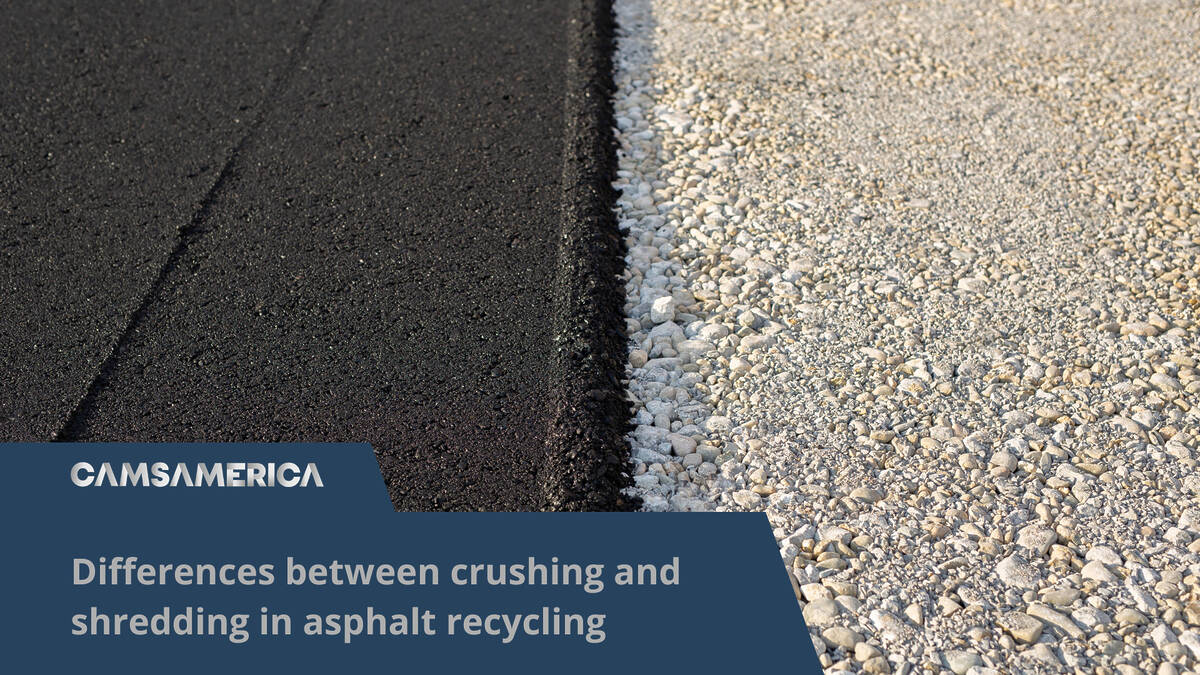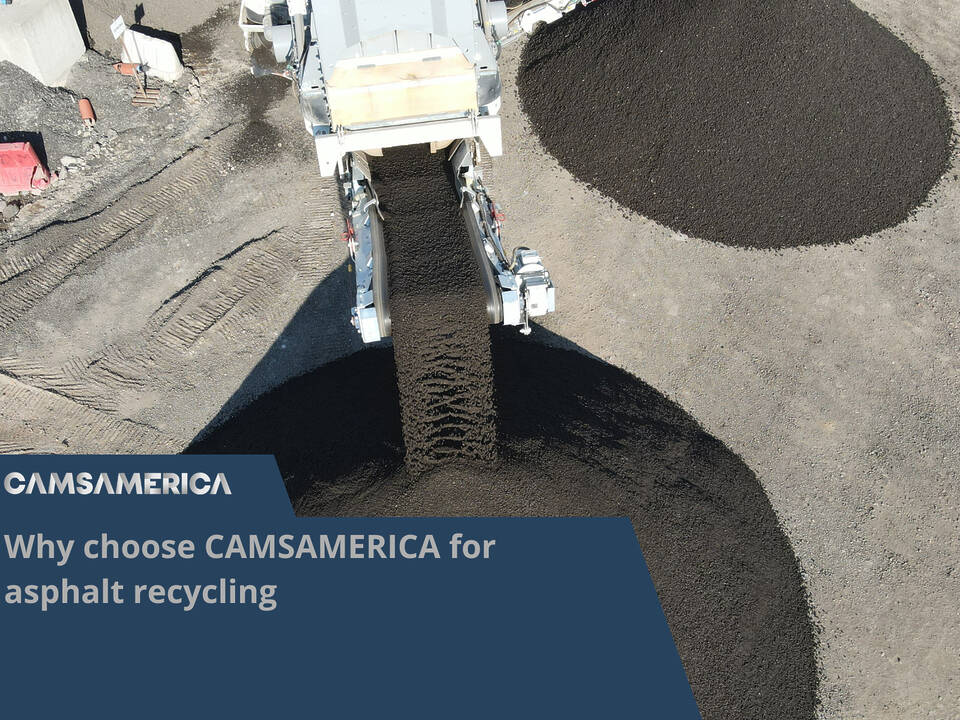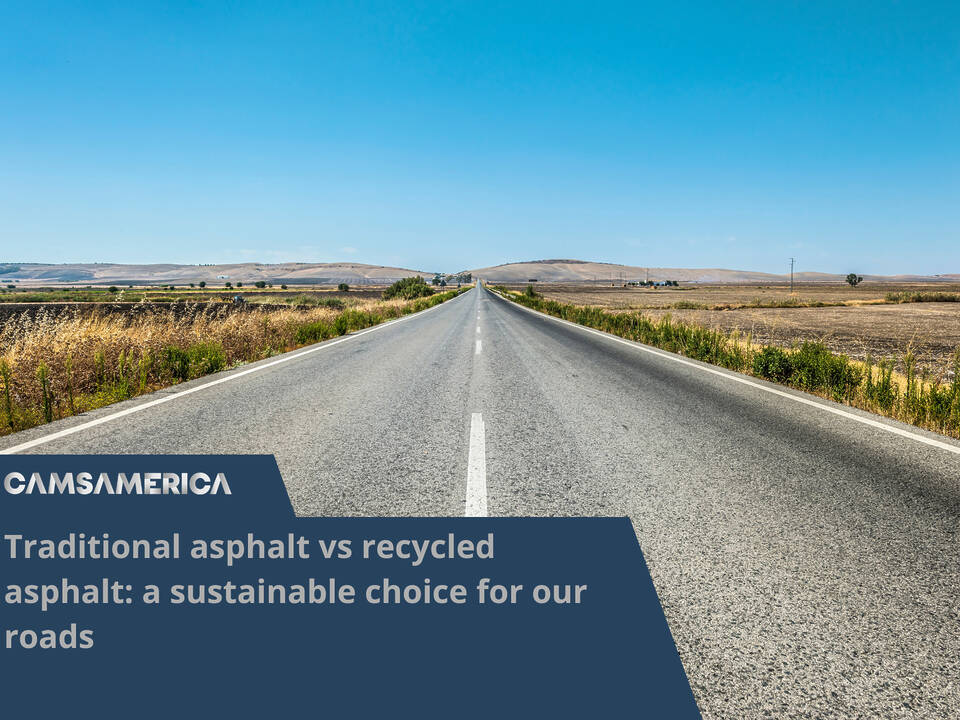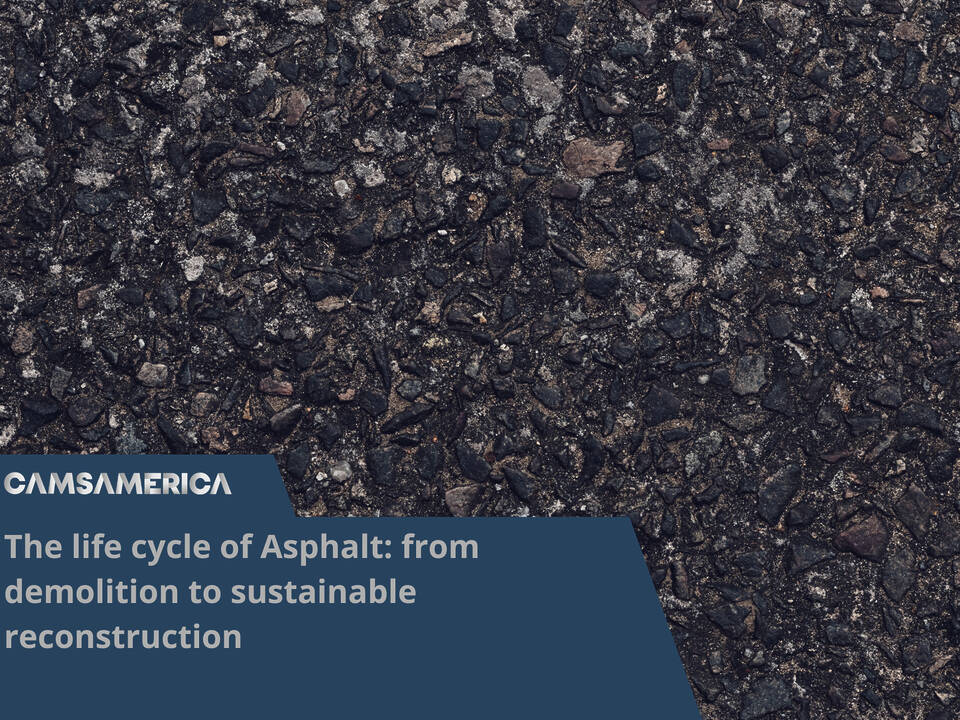During the process of recycling inert materials such as asphalt and bitumen, different techniques can be used to recover the materials in the road surface to be replaced. The two main techniques used are crushing and shredding. In this article we will look at the main differences between these two techniques and how CAMSAMERICA machines take advantage of shredding to gain several advantages.
The main differences between crushing and shredding
In the context of asphalt recycling, crushing and shredding are two distinct processes, used to recover the bitumen present in the road surface to be replaced for the production of the new surface.
With both techniques, bitumen recovered from asphalt can be reused in the production of new asphalt, reducing the amount of new bitumen needed to produce the new material. What makes the difference is how these techniques operate and the type of material they return to the end of the process.
Crushing
Crushing generates a real physical break of the inert obtaining fragments of variable dimensions. These fragments can be used as a base material for the production of new asphalt but during the crushing process, the bitumen present in the asphalt is mechanically extracted and separated from other components of the asphalt such as the mineral aggregate.
Shredding
Shredding, however, aims to break up the mineral aggregate of the asphalt without physically breaking it. In doing so, the bitumen contained in the asphalt is preserved and remains attached to the aggregate. The mixture thus obtained can be used directly as a basis for the production of new asphalt.
Why shredding
- It preserves the original grain size curve: both crushing and shredding are used in the processing of aggregate materials such as rock. While crushing focuses on the physical breakage of the rock, shredding instead aims to break up the aggregate and preserve the original grain size curve.
- Lower energy consumption: the physical breakdown of the material created by the crushing increases its ability to absorb moisture, making it more difficult to dry inside the plant. This requires more energy consumption from the new conglomerate production plant.The aggregate processed by shredding, maintaining the bitumen cover, is waterproof and does not absorb moisture.
- Reduction of dust emission: the crushing process generates a production of dust that spreads in the surrounding environment while in the shredding process the bitumen contained in the removed asphalt remains attached to the stone. In this way, dust emissions are drastically reduced and bitumen loss is avoided.
- Reduced consumption of machinery and emissions: crushing is usually done by using hydraulic machinery. These particular machines require a lot of energy to operate and have particularly high fuel consumption. The shredding machines operate in full electric mode allowing you to give up fuel consumption and reduce CO2 emissions.
Today it is possible to say that shredding is the most advanced and sustainable technology for the recycling of inert materials, in particular asphalt, as it allows bitumen to be recovered without compromising the structure of the mineral aggregate and without producing dust or other waste materials during processing.

CAMSAMERICA offers a wide range of shredders that can provide a competitive advantage not only in terms of savings and emission reduction but also in terms of business opportunities and diversification of services compared to the machines that use the crushing or other recycling technologies.





